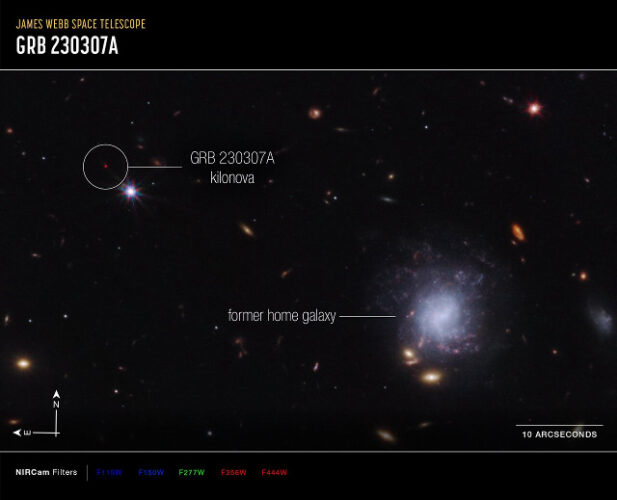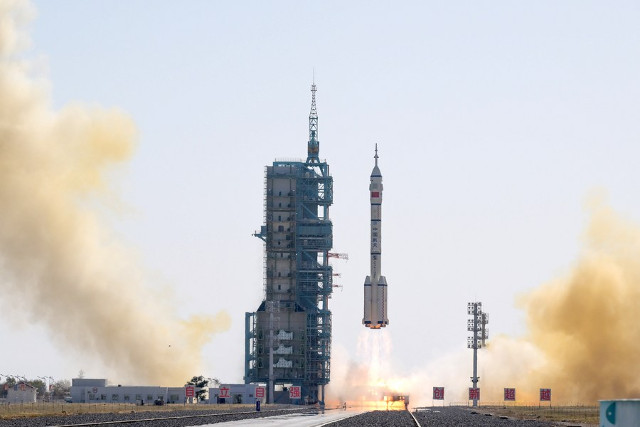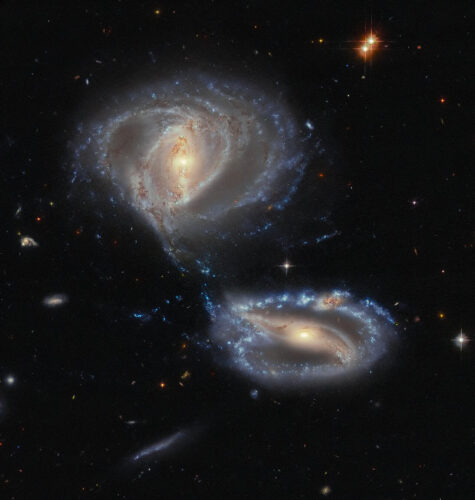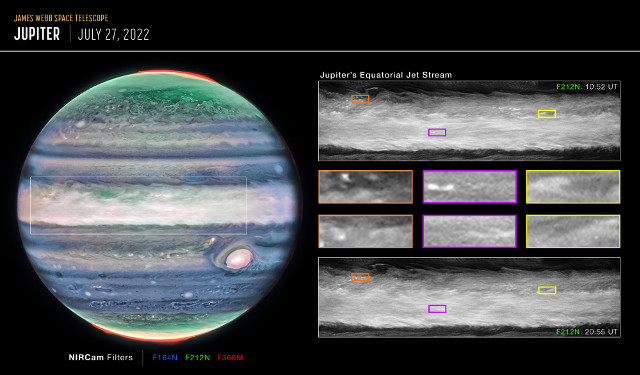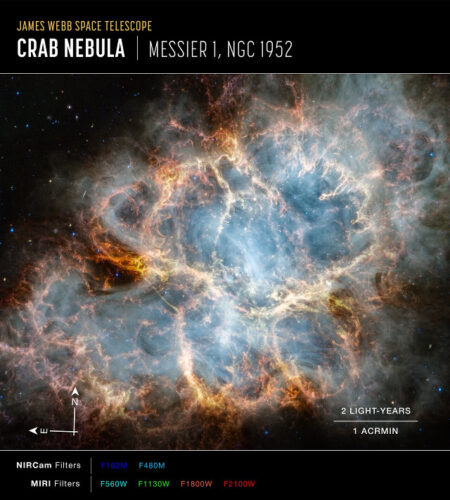
The Crab Nebula studied with the James Webb Space Telescope
A new image captured by the James Webb Space Telescope depicts the Crab Nebula, the remnants of the supernova spotted on Earth and recorded in 1054, about 6,500 light-years away from Earth. The observation possibilities at the time were limited, to say the least, compared to today’s, so there are still questions regarding that supernova. The NIRCam and MIRI instruments allowed to obtain infrared details showing the synchrotron radiation inside it, produced by the pulsar at its center that formed from the core of the progenitor star that exploded in 1054.


